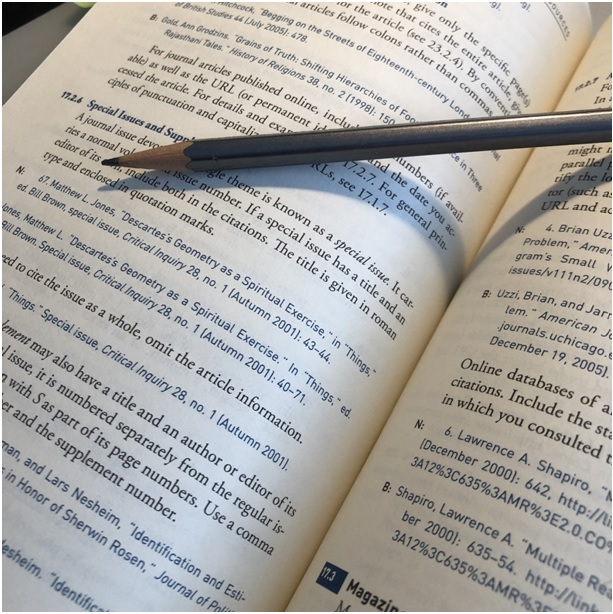Introduction to Tertiary Sources: What They Are and How to Use Them

Introduction
Tertiary sources are publications or resources that provide overviews, summaries, or indexes of primary and secondary sources. They are usually meant to provide broad, general information on a topic rather than in-depth analysis. Tertiary sources include encyclopedias, dictionaries, guidebooks, bibliographies, indexes, and handbooks.
What is a tertiary source?
Tertiary sources are publications or resources that offer an overview, summary, or index of information from primary and secondary sources. They are commonly utilized to gain a general comprehension of a topic rather than to obtain extensive analysis or knowledge. They are often organized alphabetically or thematically and are intended to make information more accessible and digestible for general audiences.
Examples of tertiary sources include encyclopedias, dictionaries, guidebooks, bibliographies, indexes, and handbooks. Encyclopedias, for instance, are comprehensive reference works that cover a wide range of topics and provide general information on each topic in a concise and accessible format. Dictionaries provide definitions and explanations of terms and concepts, while bibliographies provide lists of sources on a particular topic. Finally, indexes help users locate specific information in more extensive work, such as books or journals.
Tertiary sources can help get a quick overview of a topic, identify key terms and concepts, and find other sources for further research. However, they should not be relied upon as the sole source of information, as they may not provide the depth of analysis and context found in primary and secondary sources.
How and when should you use tertiary sources?
Tertiary sources can be valuable for research and learning, but using them appropriately and in conjunction with primary and secondary sources is essential. Here are some tips for how and when to use tertiary sources:
Use tertiary sources as a starting point: Tertiary sources can help you get an overview of a topic, identify key terms and concepts, and find other sources for further research. However, they should not be relied upon as the sole source of information. Evaluate the source’s credibility: Not all tertiary sources are created equal, like primary and secondary sources. Therefore, evaluate the source’s credibility, including the author, publisher, and potential biases.
Use multiple tertiary sources: To understand a topic comprehensively, it is advisable to refer to several tertiary sources. Different sources may provide different perspectives, and comparing and contrasting them can help you develop a more nuanced understanding of the subject. Be aware of limitations: Tertiary sources are typically designed to provide a general overview of a topic and may not provide the depth of analysis or context found in primary and secondary sources. Therefore, it is essential to acknowledge the restrictions of tertiary sources and utilize them alongside other sources to acquire a more extensive comprehension of the subject matter.
Use tertiary sources to find primary and secondary sources: Tertiary sources can be a helpful tool for identifying primary and secondary sources to use in your research. For example, bibliographies, indexes, and other reference materials can help you locate relevant books, articles, and other sources that provide more detailed information on a topic. While tertiary sources can provide a valuable starting point for research and learning, they should be supplemented with primary and secondary sources to understand the topic thoroughly.
FAQs
What is a tertiary source?
A tertiary source is a publication or resource that provides an overview, summary, or index of information found in primary and secondary sources. Examples include encyclopedias, dictionaries, guidebooks, bibliographies, indexes, and handbooks.
When should I use tertiary sources?
Tertiary sources can be used as a starting point for research to gain a broad understanding of a topic, identify key terms and concepts, and find other sources for further research. However, they should not be relied on as the sole source of information.
Are all tertiary sources created equal?
No, not all tertiary sources are created equal. Evaluating the source’s credibility, including the author, publisher, and potential biases, are essential.
What are the limitations of tertiary sources?
Tertiary sources are typically designed to provide a general overview of a topic and may not provide the depth of analysis or context found in primary and secondary sources.
How can tertiary sources be helpful in research?
Tertiary sources can be helpful in research by providing a starting point for identifying primary and secondary sources, gaining a broad understanding of a topic, and identifying key terms and concepts. Nevertheless, it is advisable to use tertiary sources in combination with other sources to obtain a more complete and thorough comprehension of the subject.
Total Assignment Help
Incase, you are looking for an opportunity to work from home and earn big money. TotalAssignmenthelp Affiliate program is the best choice for you.
Do visit :https://www.totalassignment.com/affiliate-program for more details
Total Assignment help is an assignment help Online service available in 9 countries. Our local operations span across Australia, US, UK, South east Asia and the Middle East. With extensive experience in academic writing, Total assignment help has a strong track record delivering quality writing at a nominal price that meet the unique needs of students in our local markets.
We have specialized network of highly trained writers, who can provide best possible assignment help solution for all your needs. Next time you are looking for assignment help, make sure to give us a try.
Looking for Assignment Help from Top Experts ?
Get the best Assignment Help from leading experts from the field of academics with assured onetime, 100% plagiarism free and top Quality delivery.


